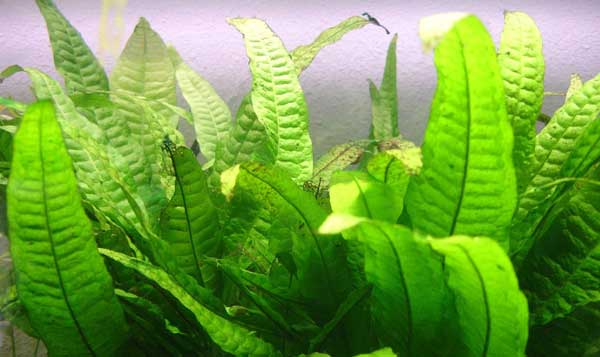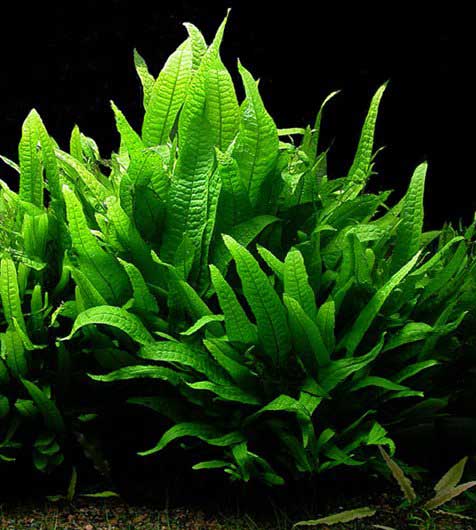Java Fern
Java Ferns, Microsorum Pteropus, is an aquatic fern originating in South East Asia. There are a lot of different variations of the Java fern, with a wide range of plant and leaf shapes. The needle leaf, narrow leaf, Windelov and lance leaf are the four most common kinds. The reason that the Java fern is so popular among aquarists is that it couldn’t be easier to grow this fern.
- Hardiness/Ease Of Care: Very Easy
- Light Needs: Low
- Plant Structure: Moss / Fern
- Family: Polypodiaceae
- Genus: Microsorum
- Region: Asia
- Location: Southeast Asia
- Size: Height: 15-30cm (6-12in)
- Growth Rate: Medium
- Can Be Grown Emersed: Yes
Table of Contents
Introduction
Growth and Care
Propagation
Compatability
It can grow like a weed in even a basic aquarium setup, spreading around the whole aquarium. With this said, it can take a while for the fern to grow. Don’t be worried if it takes a few weeks to grow after being planted.
Once the fern begins growing, it can grow up to 35cm (13 inches) tall, and 15cm (6 inches) wide. The size of the fern makes it a good choice for the middle or back of the aquarium.
Growth and Care
It is very easy to plant and grow a java fern. It would take actively trying to kill it to fail to grow it properly. It doesn’t need any kind of specialized substrate like other plants, and it can survive quite well without the need of additional carbon dioxide. Java ferns can be planted just about anywhere in the aquarium. They can be attached to driftwood, rocks, or even on the gravel. Just be careful to not bury it if putting it on substrate. It should be attached to rocks and driftwood until the roots securely fasten to them to ensure it stays in place.
Attaching the Java fern can be done by using dark colored thread or fish line. Many people choose to use thread, because thread dissolves after the plant securely roots itself. Some people also prefer zip ties and rubber bands, but they tend to be ugly and noticeable. You should consider removing the rubber band or zip tie once the plant has rooted. There is one key thing to keep in mind with Java ferns. They will need to be regularly fertilized. They don’t have roots of their own, meaning that much of their nutrients come from the water column.
To ensure that your Java fern thrives, add some liquid fertilizer after changing the water each week. Tab fertilizers are no good for Java ferns because there isn’t a root system to make use of them.
Propagation
Much like other aquarium plants, Java ferns propagate using adventitious plantlets. These plantlets will grow on old leaves that you can safely and easily break off from the rhizome. These new plants should then be moved and attached to a new location, ensuring they are tied down until the roots grow; a process that could take several weeks. The new plants develop over time, forming new rhizomes and allowing you to repeat the process.
Compatibility
What’s great about Java ferns is that fish rarely bother with it. It’s even avoided by the fish that always enjoy a tasty aquatic plant. It might not last very long in a goldfish tank, but it does last quite some time when placed in a tank with herbivore fish and cichlids.
There are plenty of reasons that have been given for the hardiness the plant displays with fish that would normally devour plants. Some sources suggest it could be that the fern tastes bitter, but the more reputable sources suggest it could be because the leaves are tough and dense; making them unattractive to fish and convincing them to stay away.
Either way, you can be sure that your Java Fern will live a nice long life in an aquarium if it is looked after.



